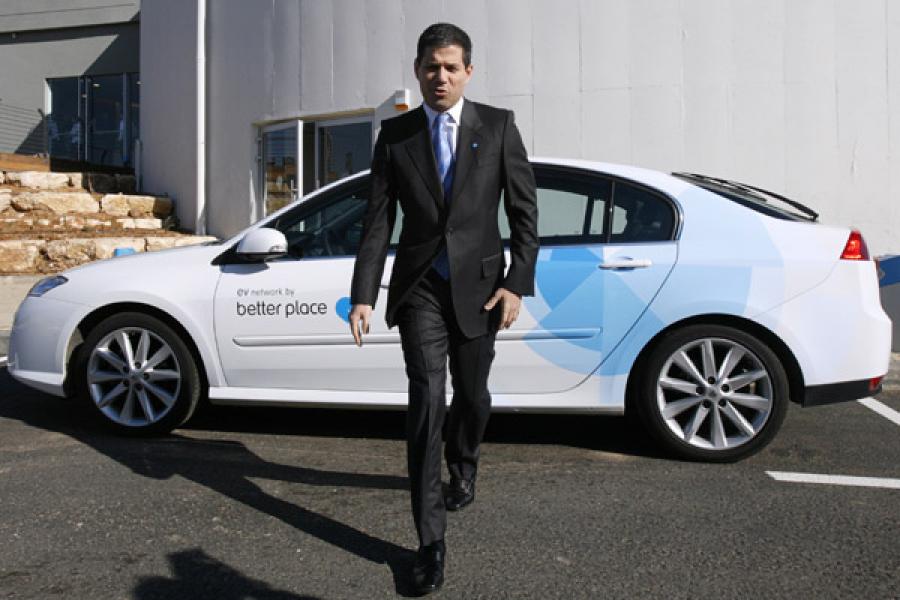Better Place goes down
Better Place files for bankruptcy
Shai Agassi wanted to make the world a better place. The company he founded, Better Place, to encourage the growth of electric vehicles filed for bankruptcy in an Israeli court yesterday.
According to Reuters: a November 2012 earnings report published by conglomerate Israel Corp, which owns about 30 percent of Better Place, said the company had an accumulated deficit of $561.5 million with more losses expected. "Revenues are still insufficient to cover operating costs, and in the light of the continued negative cash flow position, the board has decided that it has no option but to seek to make this application to the courts for an orderly liquidation of the company," Better Place said in a statement on Sunday.
In the world of electric vehicle (EV) evangelists, Shai Agassi was as big as it gets. A former SAP executive, Agassi founded Better Place in 2007, an electric vehicle infrastructure company with a revolutionary idea – one which found resonance with Carlos Ghosn, CEO of the Renault – Nissan Alliance, Simon Peres, President of Israel and was bankrolled by Idan Ofer’s Israel Corporation, GE, HSBC and Morgan Stanley. Eight months ago Agassi was booted out of Better Place and now the company is in liquidation. Why did Shai Agassi’s dream fade away?
Agassi, in fact had a fantastic idea on paper. People find it hard to buy electric vehicles because they are expensive and they are expensive because the battery used to power the vehicle is costly. Agassi’s Better Place allowed a customer to buy or lease the electric vehicle at the same price of a gasoline powered car. How? The customer didn’t have to pay for the battery. Agassi came up with the concept of the Electric Recharge Grid Operator (ERGO). Whenever the vehicle ran out of juice, a customer could walk into a battery swap station, swap the battery and continue with his journey. It took just 5 minutes to swap the battery. ERGO owned the batteries and invested in setting up the charging infrastructure.
The production commitment with Renault of about 1,00,000 EVs for Israel and Denmark. Robotic battery swap stations and charging spots were set up in Israel and Denmark. Agassi had tie-ups with Renault to sell the Renault Fluence ZE
What went wrong?
The main problem was there weren’t enough takers for Better Place’s deal. Better Place managed to sell the concept to just 400 customers in Denmark and about 900 in Israel! On the car side, Renault was the only company which supported the idea. As a result, Better Place burnt through $ 850 million of capital it raised from investors.
“I think the concept is good but the execution was flawed which is why the volumes didn’t work out. Plus Better Place spent a lot of money to prove that the battery swap technology works. Any new eco system relies on a lot of partners coming together but Better Place could not get a lot of partnerships going,” said an EV expert who didn’t want to be quoted because of his association with the company. Here it is interesting to note that last month Renault launched the Fluence ZE vehicle in France and sold about 800 vehicles. “On a similar car leasing model, the OEM has managed to sell more volumes in a month that what Better Place did in a year,” he added.
In many ways than one, this was always going to be the question. Which comes first, the electric vehicle or the infrastructure (whatever it might be, battery swap stations or charging spots)? In the Better Place model, the company spent all its money in setting up the infrastructure. A piece by The Atlantic states that each battery swap station costed the company $ 500, 000. Add to this the cost of maintaining stocks of batteries at the stations. And after the infrastructure was ready, the so called mass adoption didn’t happen. One clear limitation was that anybody who had to be a part of the Better Place model had to own a Renault Fluence ZE. Then a few sections of the Israeli media have also pointed out that Better Place didn’t market the idea well which points out to poor execution of strategy.
Chetan Maini, Chief Technology Officer of Mahindra Reva, an EV manufacturing company in India says that it is unfortunate that an innovative business model like Better Place went down. “I hope this doesn’t get killed as a concept because new business models need innovation.”
The thoughts and opinions shared here are of the author.
Check out our end of season subscription discounts with a Moneycontrol pro subscription absolutely free. Use code EOSO2021. Click here for details.


